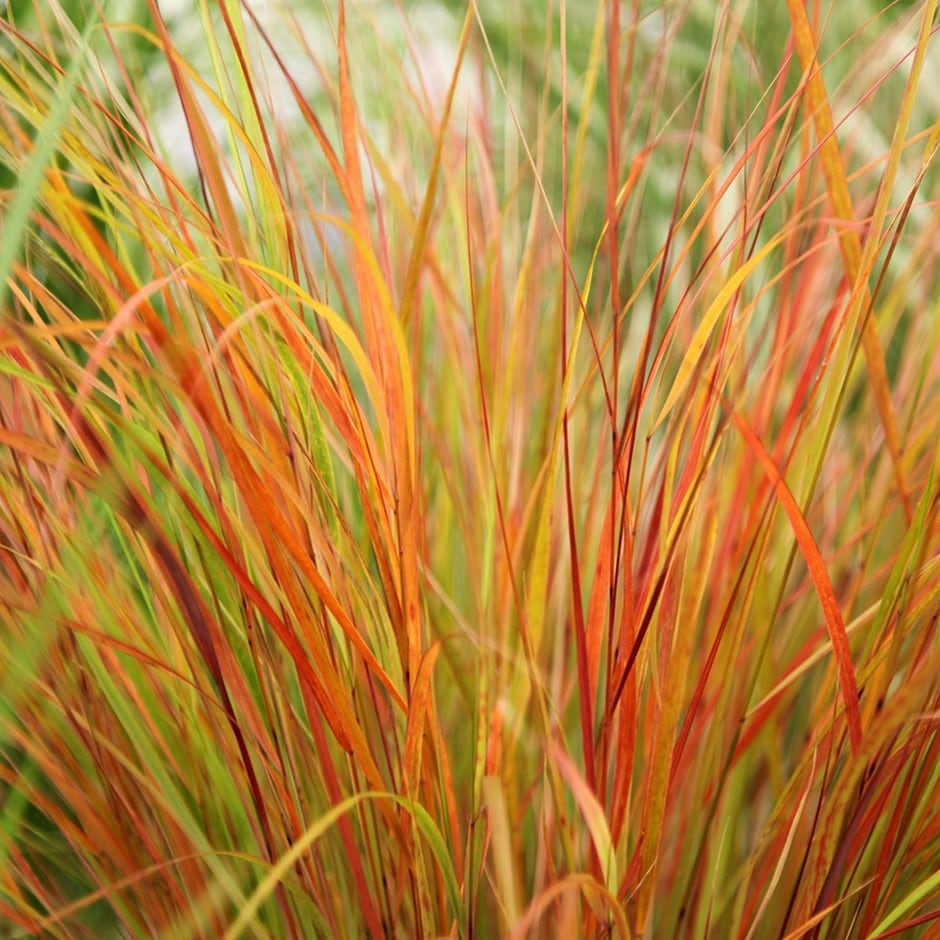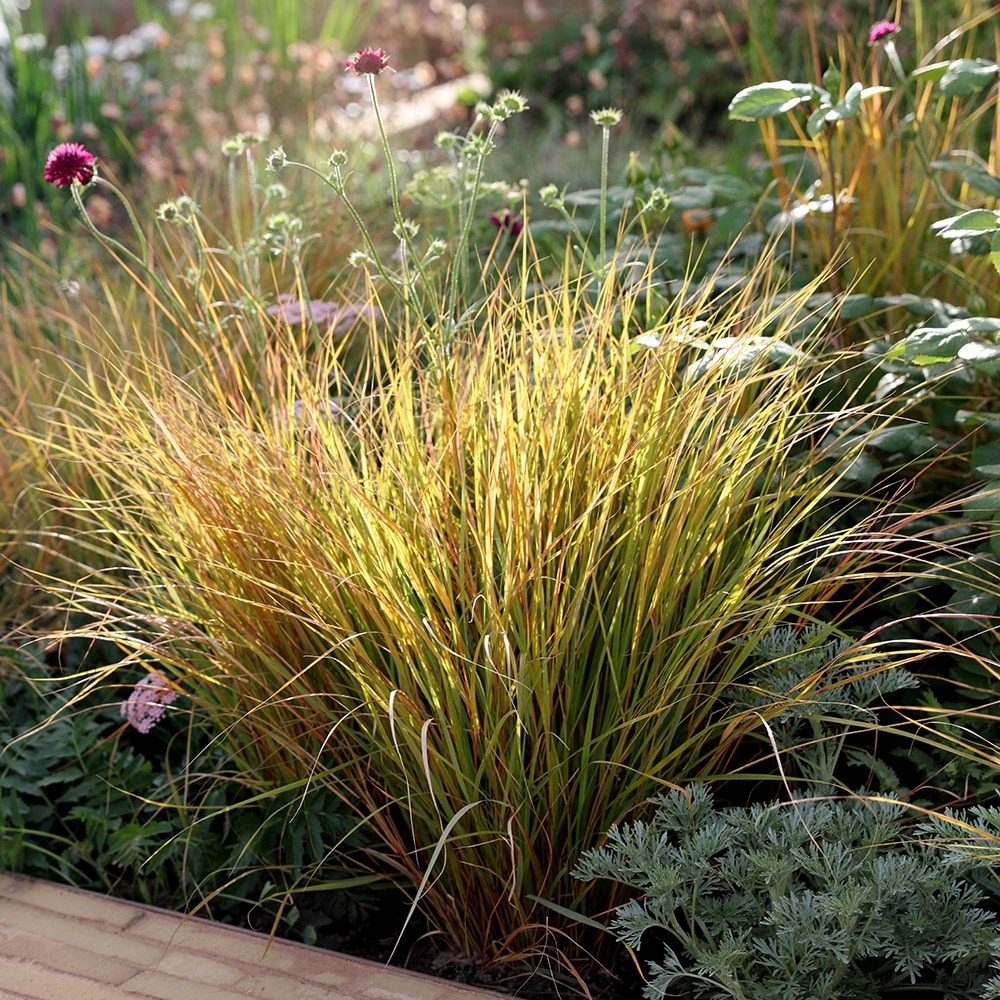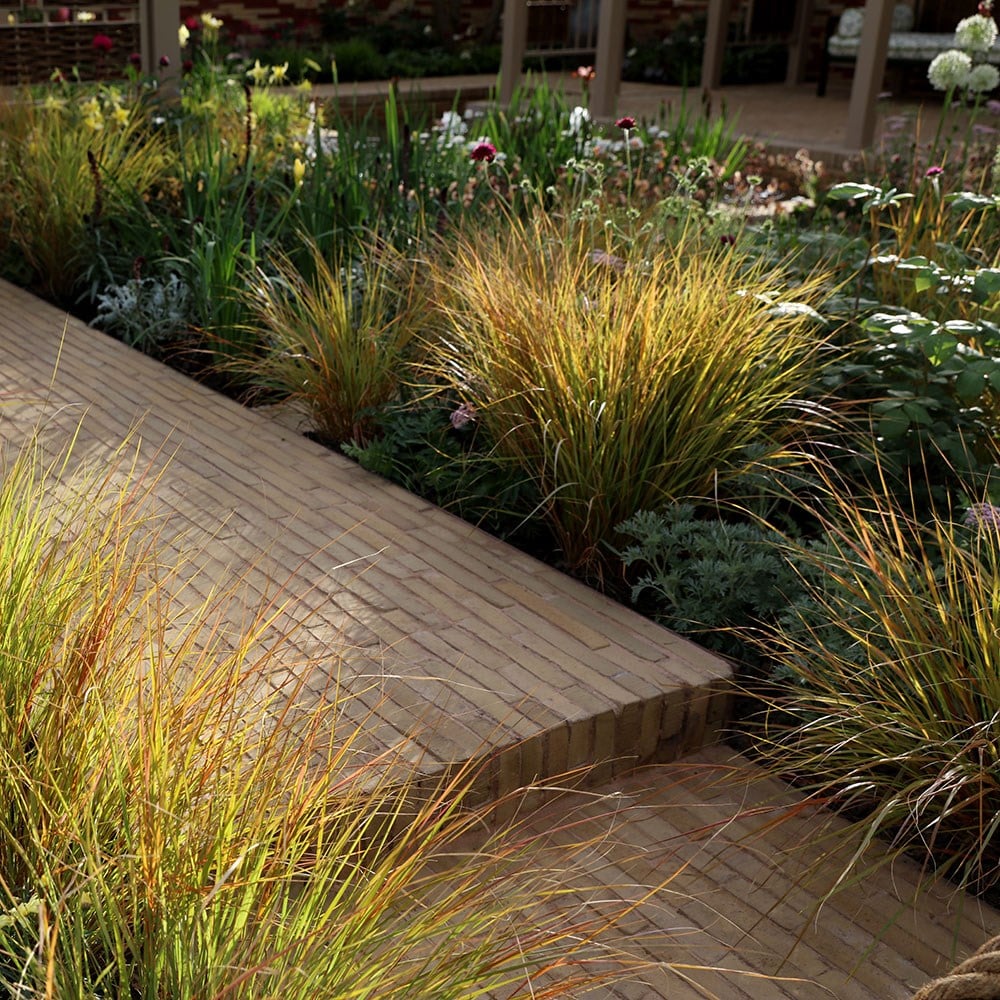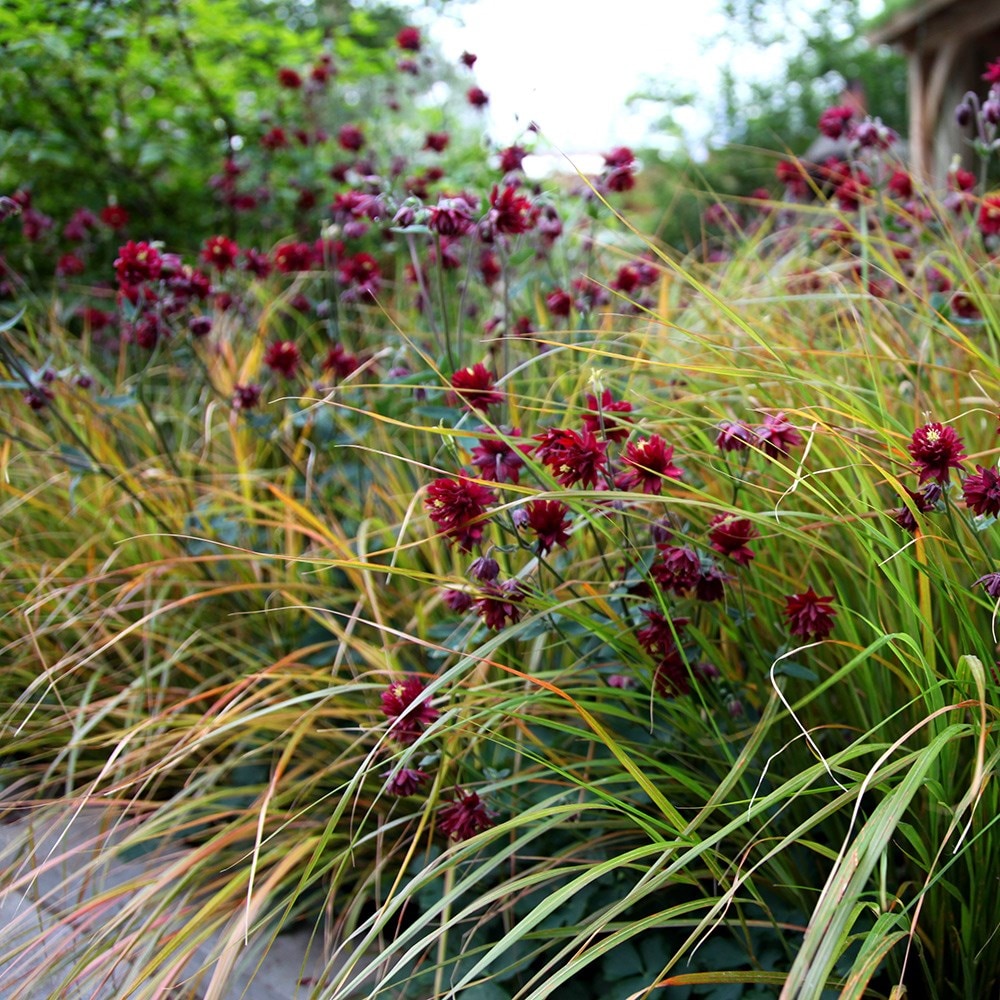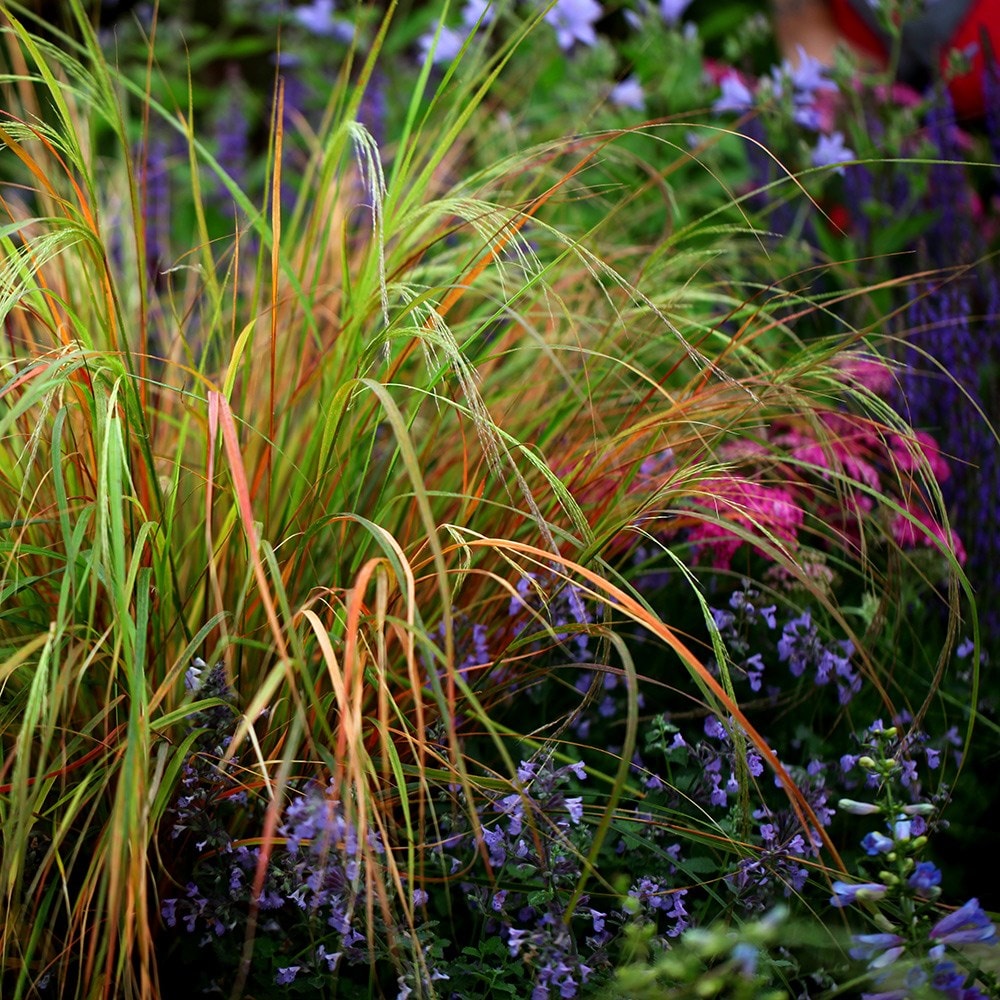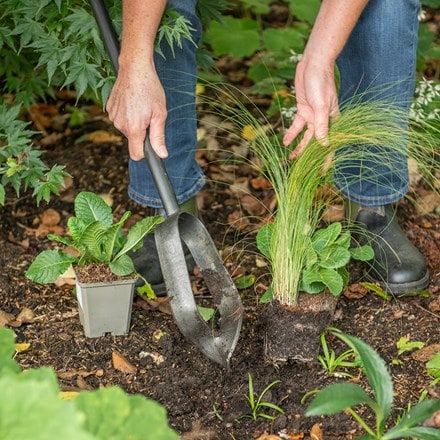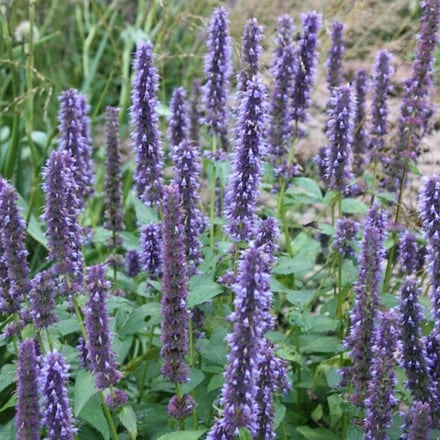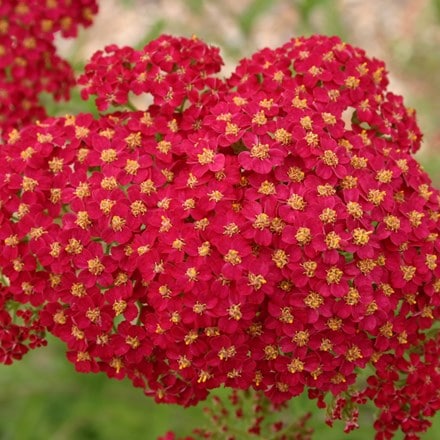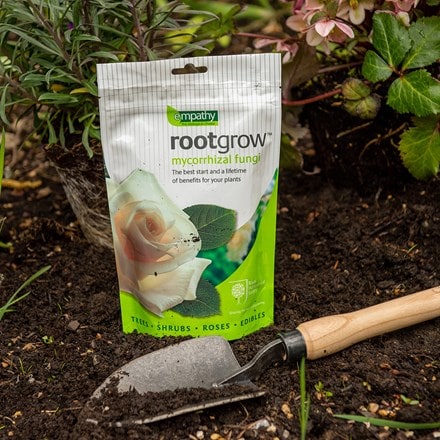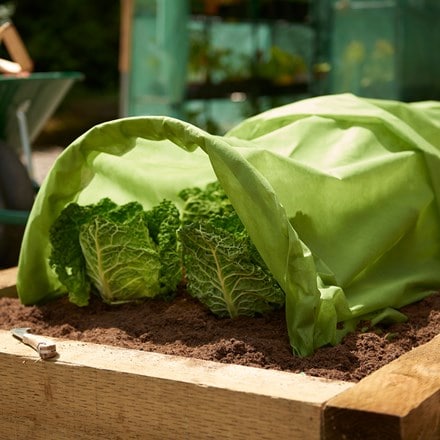Anemanthele lessoniana
pheasant's tail grass ( syn. Stipa arundinacea )
- 9cm pot
- £7.99 £9.99
- In stock (shipped within 2-3 working days)
- 3 × 9cm pots
- £18.39 £22.99 £6.13 each
- In stock (shipped within 2-3 working days)
- 6 × 9cm pots
- £31.99 £39.99 £5.33 each
- In stock (shipped within 2-3 working days)
- 2 litre pot
- £19.99
- In stock (shipped within 2-3 working days)
- 3 × 2 litre pots
- £47.99 £16.00 each
- In stock (shipped within 2-3 working days)
Delivery options
- Standard £5.99
- Position: full sun or partial shade
- Soil: moderately fertile, medium to light, well-drained soil
- Rate of growth: fast
- Flowering period: June to September
- Hardiness: frost hardy (will need winter protection)
Anemanthele lessoniana is a striking, ornamental grass that provides year-round colour, movement and structure in borders or pots.
Forming a fountain-like clump of slender, semi-evergreen foliage, with sprays of airy flowerheads, which appear in late summer, this elegant ornamental lends itself well to a wide range of planting schemes.
Often referred to as Stipa arundinacea (or more commonly pheasant's tail grass), the foliage of this adaptable and relatively drought-tolerant grass emerges green, but soon develops irregular yellow, orange and red spotting and streaking, which becomes even more intense during the colder months of the year.
This reliable, decorative and adaptable grass comes highly recommended.
Forming a fountain-like clump of slender, semi-evergreen foliage, with sprays of airy flowerheads, which appear in late summer, this elegant ornamental lends itself well to a wide range of planting schemes.
Often referred to as Stipa arundinacea (or more commonly pheasant's tail grass), the foliage of this adaptable and relatively drought-tolerant grass emerges green, but soon develops irregular yellow, orange and red spotting and streaking, which becomes even more intense during the colder months of the year.
This reliable, decorative and adaptable grass comes highly recommended.
Choose a sunny to lightly shaded spot with well-drained soil, and when planting, space plants around 45-60cm (1.5-2ft) apart to allow sufficient room for their graceful, arching habit.
To keep Anemanthele looking its best, gently tease out dead foliage in spring by running your fingers through it as if combing hair.
This grass may self-seed, so remove any unwanted seedlings as they appear to maintain control.
Finally, consider providing some protection in exposed or colder regions of the UK by covering them with a double layer of horticultural fleece or dry mulch (bark chippings/ composted pine needles) to insulate the roots.
To keep Anemanthele looking its best, gently tease out dead foliage in spring by running your fingers through it as if combing hair.
This grass may self-seed, so remove any unwanted seedlings as they appear to maintain control.
Finally, consider providing some protection in exposed or colder regions of the UK by covering them with a double layer of horticultural fleece or dry mulch (bark chippings/ composted pine needles) to insulate the roots.
Goes well with
Pinpoint hole maker for young plants/bulbs - Crocus by DeWit
small
£49.99
In stock (shipped within 2-3 working days)
